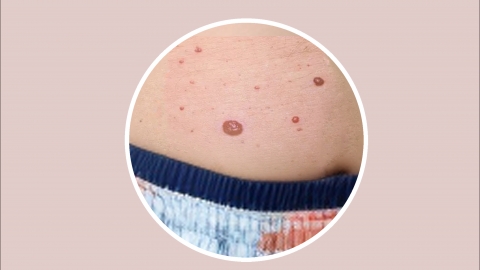How are hemangiomas caused?
Generally, hemangiomas may be caused by abnormal proliferation of vascular endothelial cells during the embryonic period, fluctuations in hormone levels in the body, abnormal repair after local skin trauma, congenital vascular malformations, cirrhosis, and other factors. It is recommended to seek timely medical consultation to determine the cause and receive appropriate treatment under a doctor's guidance. A detailed analysis is as follows:

1. Abnormal proliferation of vascular endothelial cells during the embryonic period: During fetal development, abnormal proliferation of vascular endothelial cells may form benign hemangiomas, commonly seen in infants and young children. If the hemangioma is small and causes no obvious discomfort, regular observation is sufficient, as most hemangiomas gradually regress with age.
2. Fluctuations in hormone levels in the body: Elevated estrogen levels during a woman's pregnancy may affect fetal vascular development, while long-term use of hormone medications or endocrine disorders in adults may also trigger hemangiomas. Pregnant women should avoid self-administering hormone medications and undergo regular prenatal checkups to monitor fetal development. Adults should discontinue unnecessary hormone medications and regulate their endocrine system through regular sleep patterns and balanced nutrition.
3. Abnormal repair after local skin trauma: After skin injuries such as impacts or cuts, abnormal cell proliferation during vascular repair may lead to hemangioma formation. Promptly clean wounds with normal saline after trauma, and use medications such as mupirocin ointment, fusidic acid ointment, and polymyxin B compound ointment as directed by a physician to prevent infection, promote normal healing, and reduce the risk of abnormal proliferation.
4. Congenital vascular malformations: Underdeveloped vascular structures from birth, such as weak vessel walls or abnormal vessel pathways, may easily lead to hemangioma formation and could be accompanied by mild local swelling. If the malformed blood vessels are limited in scope, laser therapy can be used to seal the abnormal vessels. For larger malformations, surgical removal of the abnormal vascular tissue may be necessary to alleviate local symptoms.
5. Cirrhosis: Cirrhosis can cause increased pressure and structural changes in liver blood vessels, leading to hepatic hemangiomas, which may affect liver function. Follow medical advice to use medications such as polyene phosphatidylcholine capsules, silybin capsules, and dipotassium glycyrrhizinate enteric-coated capsules to protect liver function. Regular follow-up examinations of hemangioma size are necessary. If the hemangioma becomes excessively large and compresses the liver, surgical removal of the hepatic hemangioma should be performed to relieve the compression.
In daily life, it is important to protect the skin and avoid frequent injuries. Parents of infants should regularly monitor changes in hemangiomas, while adults should avoid chronic sleep deprivation and excessive fatigue to maintain endocrine stability. Adopting healthy lifestyle habits can help reduce the risk of developing or worsening hemangiomas.







